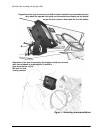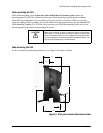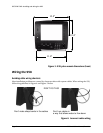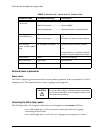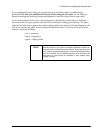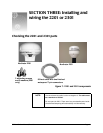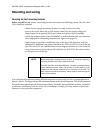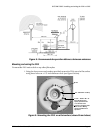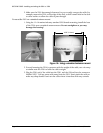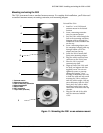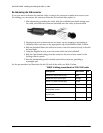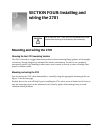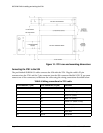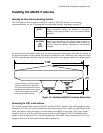
SECTION THREE: Installing and wiring the 2201 or 2301
Page 12 958 Installation Manual, Rev. A1
Mounting and wiring
Choosing the best mounting location
Before you drill or cut, choose a mounting location that meets the following criteria. The 2201 and
2301 should be mounted:
•
where there’s enough mounting clearance to easily connect the cable.
•
low on the vessel, since side-to-side motion caused by the vessel’s rolling can
degrade speed-over-ground (SOG) and course-over-ground (COG) readings.
•
below the radiation plane of any INMARSAT or radar antennas, and away from any
other high-power transmitting antennas (see Figure 8 on page 13).
•
high enough to provide an unblocked view of the sky in all directions, and that
minimizes or eliminates any objects that block the 2201 and 2301’s view of the sky
(the 2201 and 2301 use satellites down to zero degrees elevation or to the horizon).
•
away from masts or objects that could “shadow” the 2201/2301, but where there’s
an adequate view of the sky.
To avoid mutual interference among different antennas on the vessel, see the recommendations in
Figure 8 below. This figure shows the minimum distances that should separate GPS/WAAS antennas
from other antennas and physical mounting surfaces. Normally, these guidelines produce a relatively
trouble-free installation; however, since every installation is unique, you may want to adjust these
distances to the particular equipment.
NOTE:
Before permanently installing the 2201 or 2301, try temporarily installing it
and using the 958 to see if the location works well.
The 2201 and 2301 are installed differently. The 2201 is mounted directly
onto a standard antenna mount, and its cable is routed entirely on the
outside from the external connector to the connector on the 958. The
2301 uses a mount with an extension, and the cable is routed through the
inside of the extension.



